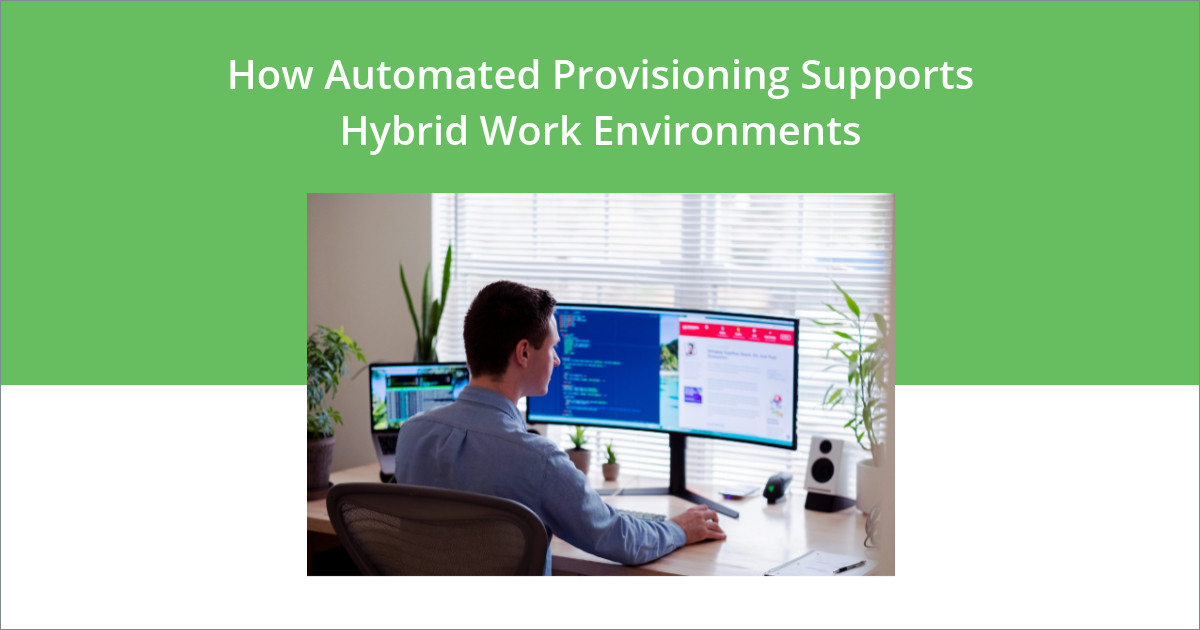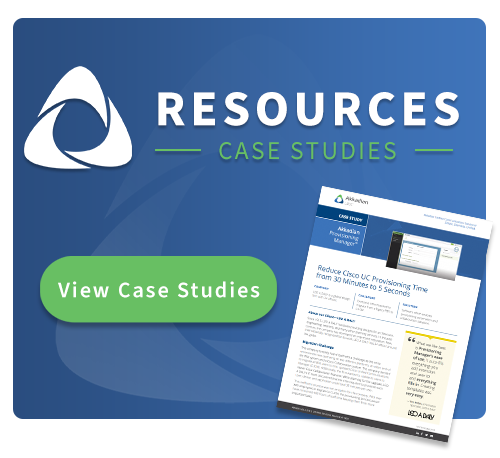Hybrid work has redefined how organizations manage technology, but many IT teams still rely on manual provisioning—a process ill-suited for today’s dynamic work. The result? Security gaps, operational inefficiencies, and employee frustration. Every location shift introduces new access variables, making manual processes slow, error-prone, and risky.
Automated UC provisioning prevents these challenges by simplifying user management, enforcing uniform security protocols, and adapting access control in real time. Instead of restricting flexibility, it empowers organizations to embrace secure hybrid work.
This blog explores the pitfalls of traditional provisioning and how automation supports hybrid work environments.
Why Traditional Provisioning Falls Short
Traditional provisioning handles predictable work patterns: fixed locations, consistent schedules, and company-controlled devices. As hybrid work rises, however, these legacy systems demonstrate critical weaknesses.
Detached User Management
When employees join, move between roles, or leave an organization, manual provisioning creates dangerous gaps between status changes and access updates. A remote employee departing might retain sensitive system access for weeks, while a new hire waits for essential tools.
Inconsistent Security Controls
Manually configuring UC permissions creates a patchwork of security practices across platforms and devices. Remote workers frequently operate under different security parameters than office staff, while personal devices introduce further variables. These inconsistencies create exploitable gaps that can compromise entire systems and networks.
READ MORE: 5 Biggest UC Security Threats & How to Mitigate Them With Automated Provisioning
Resource-Intensive Operations
IT teams waste valuable time on repetitive provisioning tasks, which delay the progress of other initiatives. As the number of devices, locations, and connection methods rapidly increases, manual processes become unsustainable, leading to bottlenecks.
Employee Friction
Hybrid workers need technology that adapts to their changing environments. Manual provisioning causes disruptions—applications may work in one location but not another, permissions might not transfer across devices, and support delays stall productivity. These friction points affect the flexibility that makes hybrid work valuable.
Traditional provisioning methods introduce security risks, inefficiencies, and frustration. However, there is a solution: UC automated provisioning.
7 Ways Automated Provisioning Transforms Hybrid Work
1. Accelerates Secure Onboarding and Offboarding
Automated provisioning reduces the time between hiring decisions and productive work. New team members gain immediate access regardless of location, while departing employees lose system access once they leave.
Pre-configured templates also allow IT teams to provision complete UC profiles in moments, not days. When linked to HR systems, provisioning responds automatically to employment status changes without manual intervention.
READ MORE: Onboarding Employees to Microsoft Teams Using Akkadian Provisioning Manager
This automation ensures new employees can contribute upon hire while swiftly revoking access for former team members, proactively preventing security breaches.
2. Enforces Zero-Trust Security Models
Hybrid environments demand verification of every user and device before granting access—regardless of location or network. Automated provisioning makes this zero-trust approach practical by implementing granular controls that limit permissions to essential role requirements.
The system applies consistent authentication standards across platforms while adjusting access based on device status, location, and behavior patterns. This approach shifts security from location-based perimeters to a user-centered model that protects resources wherever work happens.
3. Blocks ‘Shadow IT’
Employees create parallel technology ecosystems outside security oversight when official tools prove challenging to access. Automated provisioning prevents this shadow IT by removing the barriers that drive employees toward unauthorized solutions.
Self-service portals and streamlined approval workflows mean access requests no longer languish in IT queues. Role-based packages anticipate these needs before employees seek workarounds. Automated provisioning aligns employee behavior with security requirements by making secure options more convenient than alternatives.
4. Encourages Workspace Fluidity
Hybrid work hinges on transitions from home offices to corporate locations and beyond. Automated provisioning addresses this need by fluidizing workspaces and guaranteeing a consistent user experience across all devices and locations.
When employees shift from home to office or desktop to mobile, their security permissions, application access, and configurations follow automatically. This continuity empowers workers to choose the best environment for different tasks without compromising productivity or security.
5. Strengthens Compliance Boundaries
As work spreads beyond controlled environments, compliance becomes increasingly complex. Sensitive data moves between corporate networks, home offices, and public areas, leading to greater regulatory exposure.
Automated provisioning establishes clear compliance boundaries by enforcing consistent data handling, regardless of location. The system generates comprehensive audit trails, automatically implements regulatory controls, and regularly verifies access appropriateness. This proactive approach transforms compliance from a series of costly reactions into an integral part of daily operations.
6. Turns IT from Gatekeeper to Enabler
Traditional IT support spends countless hours managing basic access requests and fixing permission issues. Automated provisioning directs this energy toward enhancing the work experience instead of just maintaining it. By preventing common access problems through consistent provisioning and allowing self-service for routine needs, IT teams free up capacity for strategic improvements. Support interactions transition from frustrating permission delays to meaningful technology enhancements that drive progress.
7. Creates Resource Elasticity
Hybrid work generates unpredictable demands for UC resources, as usage patterns fluctuate across locations and schedules. Automated provisioning introduces elasticity, allocating resources to actual needs.
The system monitors usage patterns, adjusts license allocations, reclaims unused resources, and provides decision-making insights that optimize spending. This intelligence transforms UC from rigid infrastructure to a responsive service that adapts to changing requirements without waste.
Conclusion
As hybrid work expands, automated provisioning becomes an optional enhancement rather than a critical necessity. Organizations that embrace automation gain stronger security, improved efficiency, and enhanced employee satisfaction—all while reducing compliance risks and IT burdens.
Ready to transform your organization’s hybrid approach? Akkadian Provisioning Manager delivers the automation capabilities to secure, simplify, and scale your UC environment. Schedule a demo to see how our UC platform stops security gaps while empowering your workforce.



